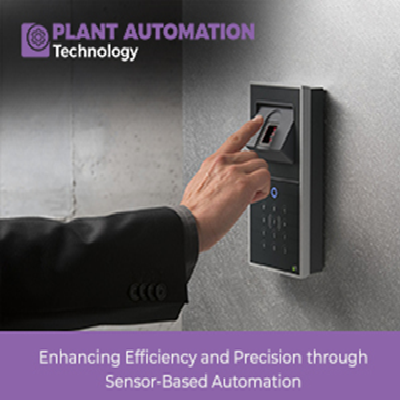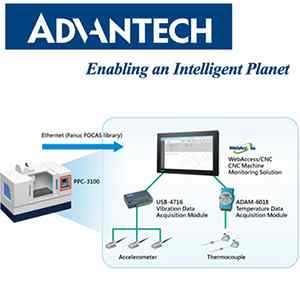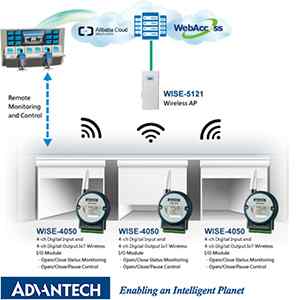Enhancing Efficiency and Precision through Sensor-Based Automation

Introduction
In today's rapidly evolving technological landscape, businesses strive to enhance operational efficiency and precision. Sensor-based automation emerges as a key catalyst in this pursuit. By leveraging sensors to collect real-time data, make informed decisions, and optimize industrial processes, businesses can unlock new levels of efficiency and precision. This article delves into the transformative impact of sensor-based automation, exploring its role in driving operational excellence across diverse industries.
I. The Role of Sensors in Automation
1.1 Sensors and Data Collection: Sensors capture large volumes of data from the environment and machinery. Temperature, pressure, humidity, vibration, and other factors are monitored. Sensors enable businesses to obtain significant insights into their operations and discover bottlenecks and opportunities for improvement by providing real-time data.
1.2 Real-time Monitoring and Control: With sensor-based automation, businesses can monitor operations in real-time. This allows for immediate identification of deviations from desired parameters, enabling proactive maintenance and intervention. Real-time feedback from sensors optimizes processes, ensuring efficiency and minimizing downtime.
| Also Read:Energy Efficiency in Manufacturing: Strategies for Sustainable Operations |
II. Improving Efficiency through Sensor-based Automation
2.1 Process Optimization: Sensor-based automation enables industrial process optimization. By continuously monitoring and analyzing data, sensors identify inefficiencies and areas for improvement. For example, sensors can measure production line performance, detect defects, and trigger automatic adjustments. This results in increased efficiency and reduced waste.
2.2 Predictive Maintenance: One significant advantage of sensor-based automation is its ability to enable predictive maintenance. By monitoring equipment conditions in real time, sensors can detect signs of wear, malfunctions, or potential failures. This allows businesses to schedule proactive maintenance tasks, avoiding costly breakdowns and optimizing equipment uptime.
2.3 Energy Management: Sensors are invaluable in managing energy consumption efficiently. By monitoring energy usage patterns, sensors identify areas of high consumption and inefficiency. This data can be used to implement energy-saving measures, such as adjusting equipment settings or optimizing production schedules, leading to reduced energy costs and a more sustainable operation.
III. Precision in automation with sensors
3.1 Accurate Measurement and Control: Sensors provide precise and accurate measurements, enabling tight control over various processes. For instance, in pharmaceutical manufacturing, sensors can monitor and control temperature, humidity, and other critical parameters to ensure consistent product quality. This level of precision is essential in industries where even slight deviations can have significant consequences.
3.2 Quality Assurance: Sensor-based automation enhances quality assurance by ensuring adherence to strict standards. Sensors can detect variations in product dimensions, chemical composition, or visual defects, triggering immediate corrective actions. This reduces the risk of defective products reaching customers, protects brand reputation, and minimizes product recalls.
3.3 Robotics and Autonomous Systems: In robotics and autonomous systems, sensors play a pivotal role in enabling precise and safe operations. Proximity sensors, LiDAR, and vision systems enable robots and autonomous vehicles to navigate their surroundings, avoiding obstacles and performing tasks with high accuracy. This precision enhances efficiency and safety in various industries, including logistics, healthcare, and agriculture.
IV. Leveraging Real-Time Data for Intelligent Decision-Making
4.1 Data-Driven Insights: Sensor-based automation offers businesses real-time data, allowing them to make more informed decisions. Businesses can find patterns, trends, and correlations in acquired data that may not be seen through manual observation. This data-driven strategy enables informed decision-making, process optimization, and improvement opportunities.
4.2 Continuous Process Monitoring: With sensor-based automation, businesses can monitor their processes continuously. Sensors provide a constant stream of data, allowing real-time analysis and intervention. Continuous monitoring enables businesses to identify anomalies or deviations from desired parameters. By addressing issues as they arise, businesses can maintain optimal efficiency and precision in their operations.
V. Unlocking Efficiency in Various Industries
5.1 Manufacturing and Production: Sensor-based automation has revolutionized manufacturing and production processes. By integrating sensors into machinery and production lines, businesses can monitor critical parameters such as temperature, pressure, and speed, ensuring optimal performance. Automated systems can adjust settings or trigger alarms when deviations occur, minimizing downtime, reducing defects, and improving overall efficiency.
5.2 Supply Chain and Logistics: Efficiency and precision are crucial in supply chain and logistics operations. Sensor-based automation enables real-time tracking and monitoring of inventory, shipments, and vehicles. Sensors provide visibility into factors like temperature, humidity, and location, ensuring goods are transported and stored under optimal conditions. This reduces the risk of spoilage, damage, or delays, streamlining operations and improving customer satisfaction.
5.3 Healthcare and Pharmaceuticals: In the healthcare and pharmaceutical industries, precision and accuracy are paramount. Sensor-based automation plays a critical role in patient safety, drug quality, and efficient healthcare delivery. Sensors monitor vital signs, medication dosages, and environmental conditions, enabling precise diagnostics, medication administration, and regulatory compliance. This level of automation improves patient outcomes and streamlines healthcare processes.
VI. Embracing Sensor Technology for the Future
6.1 Internet of Things (IoT) Integration: Sensor-based automation forms the foundation for integrating IoT devices and systems. By connecting sensors to IoT platforms, businesses can leverage data analytics and machine learning algorithms. This integration enables predictive maintenance, intelligent resource allocation, and dynamic process optimization. As IoT technologies advance, the synergy between sensors, automation, and IoT will drive even enhanced efficiency and precision.
6.2 Artificial Intelligence (AI) and Machine Learning: Sensor-based automation, when combined with AI and machine learning, opens up new possibilities for efficiency and precision. AI algorithms can analyze vast amounts of sensor data, detecting patterns and anomalies that humans may overlook. This enables proactive decision-making, predictive analytics, and autonomous control systems. AI and sensor-based automation empower businesses to achieve new levels of efficiency and precision.
Conclusion
Sensor-based automation has improved efficiency and precision in many industries. Businesses may optimize operations, enhance operational efficiency, and ensure high-quality outputs by utilizing real-time data. Sensor integration with automation systems offers preventative maintenance, energy management, and precise control. This results in cost savings, increased productivity, and increased customer satisfaction. Sensor-based automation's importance in boosting efficiency and precision will only grow as technology advances, making it a critical priority for firms looking to stay competitive in today's fast-paced world.







